In recent years, market conditions, geopolitics, and cryptocurrencies created a perfect storm to force graphics card pricing upwards. It was already tough to buy GPUs on a budget unless you were content with a functional graphics card that would display your desktop but not much in the way of playing games. Nvidia, and to a lesser extent AMD, have all but abandoned the budget range.
But thanks to Intel jumping into the graphics card scene, the low-to-mid-range GPU market has somewhat stabilized. Although you're not going to find the best graphics cards in the sub-$400 range, the cards we've highlighted in this list can manage 1080p gaming, with a few providing decent frame rates even at 1440p.
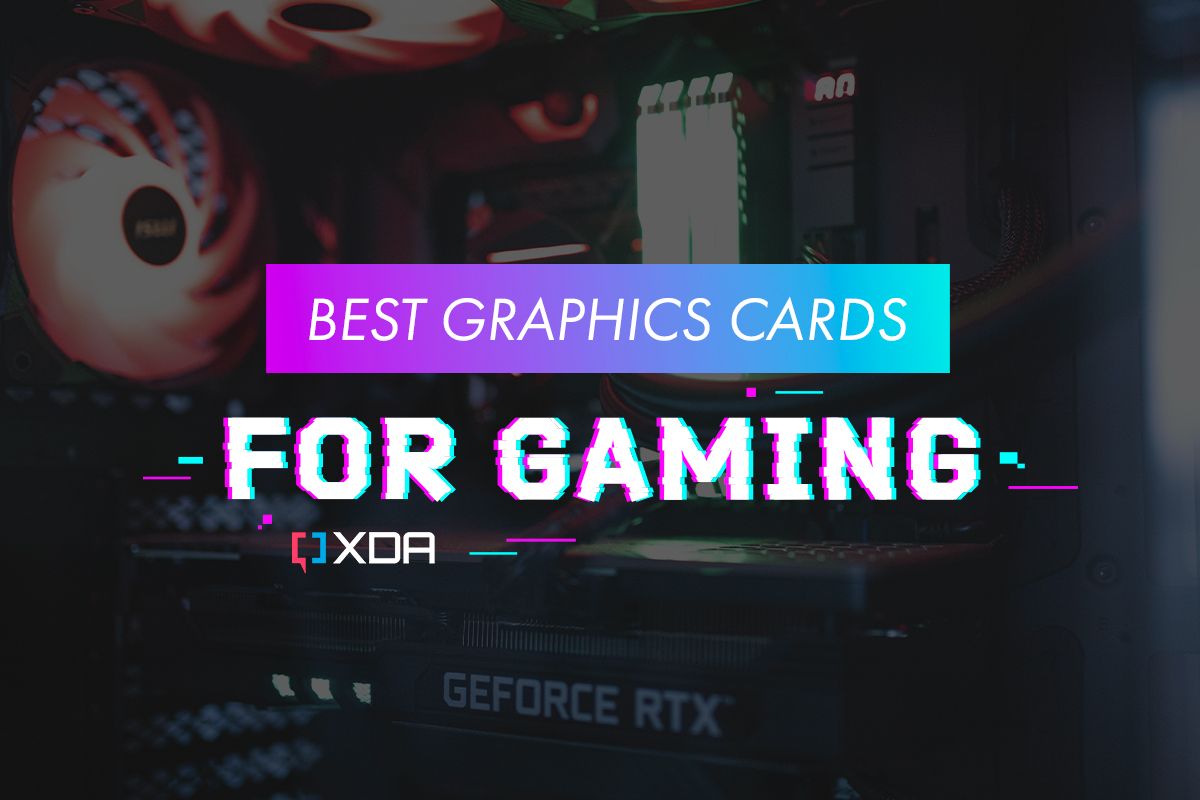
Best GPUs for gaming in 2024
The GPU is arguably the most important part of any gaming PC build, so we're here to help you choose the right oneThese are the best budget graphics cards in 2024
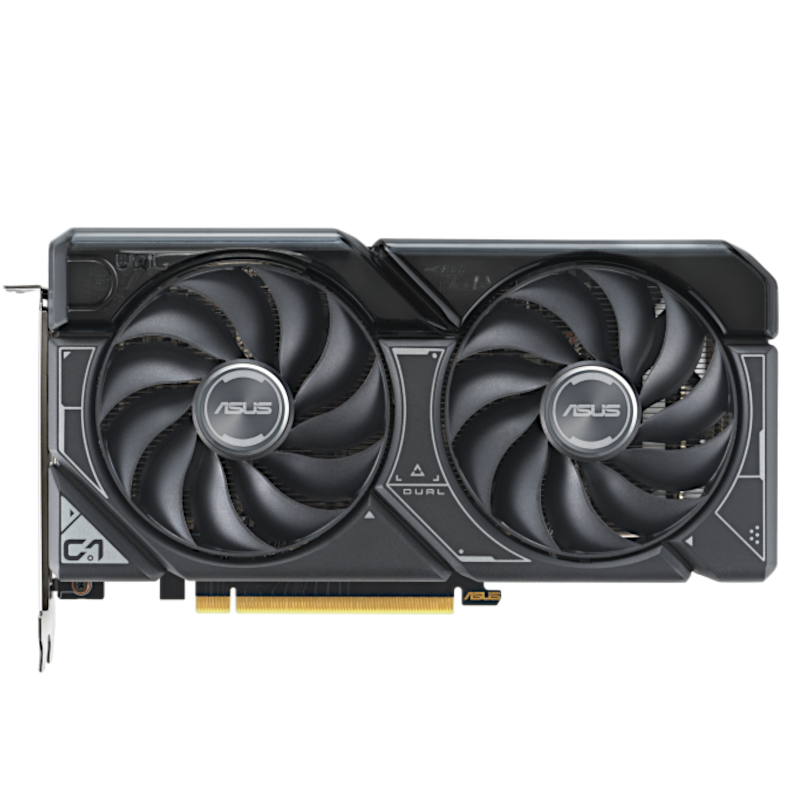
Asus Dual GeForce RTX 4060
The king of budget GPUs
Asus's RTX 4060 Dual is one of the more affordable versions of the 4060. It comes with a simple but cost-efficient dual fan design, which is more compact than bigger, triple fan models.
- Better ray-tracing performance
- Supports DLSS 3.5
- Efficient
- Not a ton of VRAM
- Generally poorer value than AMD and Intel cards
Nvidia has been more or less absent from the budget market since 2020. Not much has changed since then, as the RTX 3050 was never available for $250 as Nvidia had initially claimed. Instead, the GPU was sold for nearly $350 until the release of the RTX 4000 family. If we stretch the definition of a budget GPU to $300, then Nvidia's acceptable RTX 4060 is certainly a good candidate, and while it won't amaze you, it's certainly a usable graphics card with good efficiency, performance, and features.
With just 3,072 CUDA cores, 8GB of GDDR6 VRAM, and a 128-bit memory bus, the RTX 4060 is pretty barebones compared to the card it apparently replaces, the 3060, which had 3,584 cores and 12GB of VRAM on a 192-bit bus. Despite all that, the 4060 coasts along with its massive 2,460MHz boost clock, allowing it to actually be faster than the 3060 by around 15%, though having just 8GB of RAM is a little concerning.
As for the competition, it's mostly just the RX 7600 and Arc A750, both of which are about on par or at worst a little slower depending on the game. Beyond pure performance though, the 4060 offers DLSS 3.5, better ray tracing performance, higher efficiency, and some other, more minor Nvidia features, all of which can certainly justify spending the extra $50 this card costs.
While it would be nice for Nvidia to launch another GPU in the $100 to $200 segment as it had up until the RTX 30 series, it's highly likely the RTX 4060 will be Nvidia's cheapest GPU worth getting for some time. A theoretical desktop variant of the RTX 4050 should be based on the same silicon as the 4060, which probably means it'll be at least $200, and who knows if it'll be fast enough to be worth getting. At least with the RTX 4060, you get an acceptable product, even if it's not exactly a budget GPU.
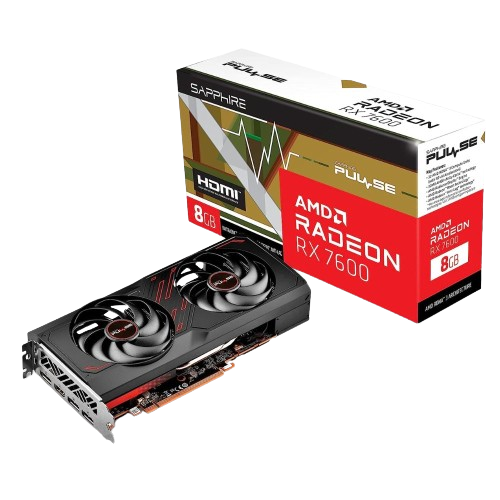
Sapphire Radeon RX 7600 Pulse OC GPU
Great performance at an affordable price
The Sapphire Radeon Pulse RX 7600 OC is a great option to consider if you are in the market for a sub-$300 graphics card. It may not be particularly good at ray-tracing, but it can easily run most modern AAA titles, like Cyberpunk 2077 with ease at 1080p.
- 8GB of GDDR6 memory
- Oversized heatsink with three cooling fans
- HDMI 2.1 and DisplayPort 2.1 outputs
- Lower ray-tracing performance
- High power usage
AMD's Radeon RX 7600 gets my recommendation for the best value GPU thanks to its overall performance. It's not firmly in budget territory, but it's ideal for users who want a good mid-range GPU that can game at 1080p. Heck, it can even chug along at 1440p, as long as you're willing to turn down some settings.
Since it packs the same 32 Compute Units (or CUs) and 8GB GDDR6 VRAM as the last-gen 6650 XT, the AMD Radeon RX 7600 is only slightly better than its predecessor at raw performance. Within the current RX 7000 family, the RX 7600 lies at the bottom of the food chain, with the lowest memory and CUs. For instance, the 7600 has 8GB of GDDR6, as opposed to the 16GB found on the 7600 XT and 7700 XT. However, the 7600 is a lot cheaper than its brethren, costing anywhere between $50-80 less than the RX 7600XT, which is just a buffed-up 7600 with higher memory.
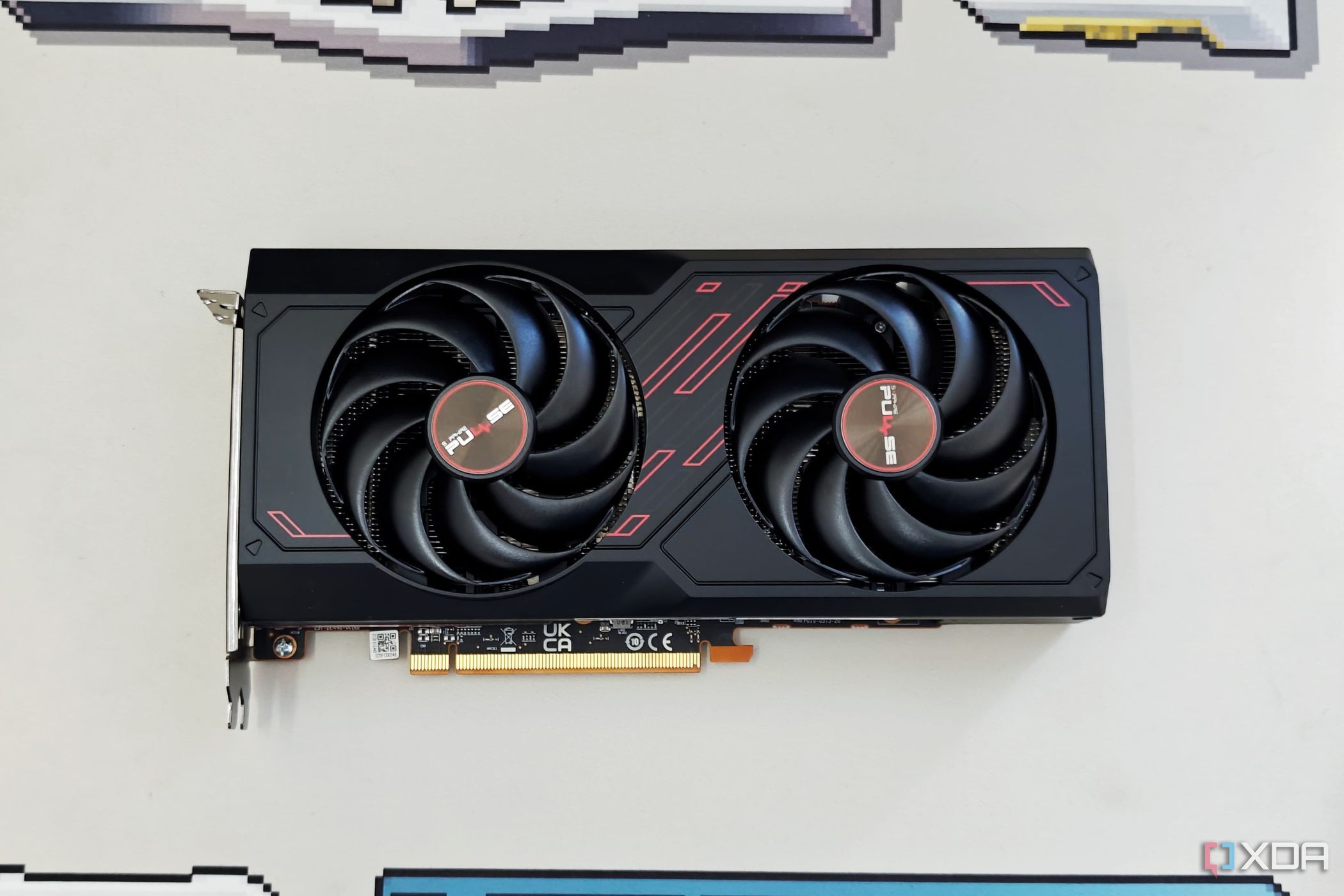
Sapphire Pulse Radeon RX 7600 OC review: Good 1080p performance in a pint-sized package
Great for 1080p gaming, as long as you don't mind skipping ray-tracing.The 7600's main performance-based competition is the RTX 4060, which usually costs upwards of $300. The 4060 does come with 8GB of GDDR6 like the 6600 XT but does have an advantage with DLSS, superior ray tracing performance, and other Nvidia features. Even if you're not a fan of Nvidia's ray tracing technology, the superior upscaling algorithms included in DLSS 3.5 make it more future-proof. Intel's Arc A750 is also a competitor at $250 or less, but it suffers from driver issues, making the RX 7600 the best current-gen card for those who want an affordable yet capable GPU.
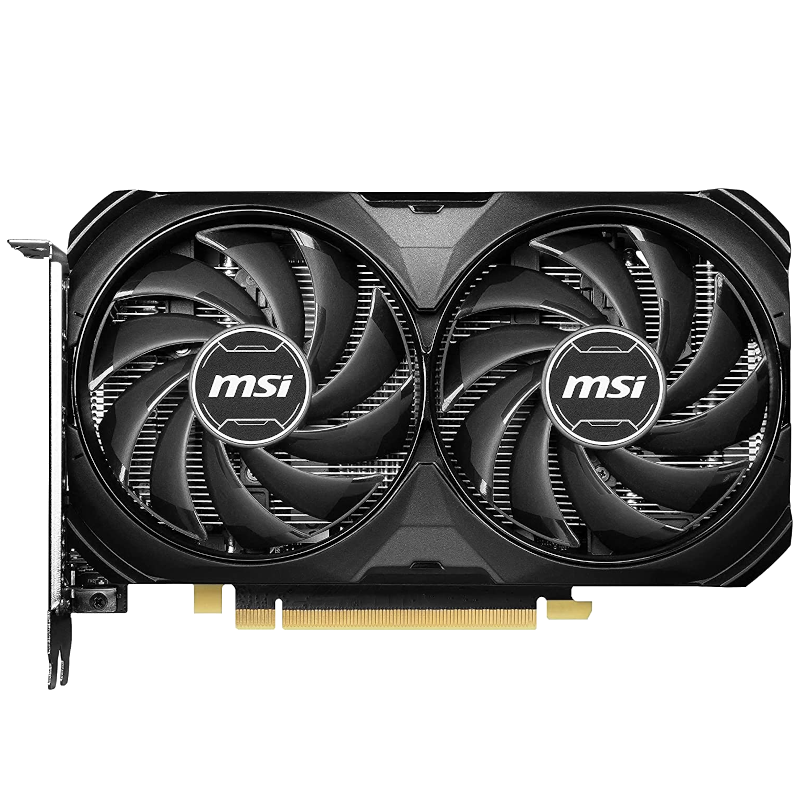
MSI GeForce RTX 4060 Ti Ventus 2X Black 8G
A bit expensive, but you get what you pay for
The MSI GeForce RTX 4060 Ti Ventus 2X Black 8G is one of the more affordable RTX 4060 Ti cards available, undercutting even the Founders Edition. While it costs more than your typical budget GPU, it's a solid little card for gaming at 1080p.
- Decent for those who want ray-tracing at 1080p
- Can run games at 1440p
- Power efficient
- Terrible 4K performance
- Pricey for a "budget" card
For the last couple of GPU generations, an increase in performance has always been accompanied by a surge in pricing. This statement is especially true for the RTX 4060 Ti, which offers decent performance for a rather expensive price.
When contrasted with the RTX 4060, the 4060 Ti is 20-25% faster than its younger sibling thanks to its 4352 CUDA cores and 2.54GHz boost clock, as opposed to the 3072 CUDA cores and 2.46GHz turbo frequency of the RTX 4060. The same holds true for DLSS and ray-tracing workloads, with the 32 Ray-Tracing (RT) and 128 tensor cores pulling ahead of the 24 RT and 96 tensor cores inside the RTX 4060.
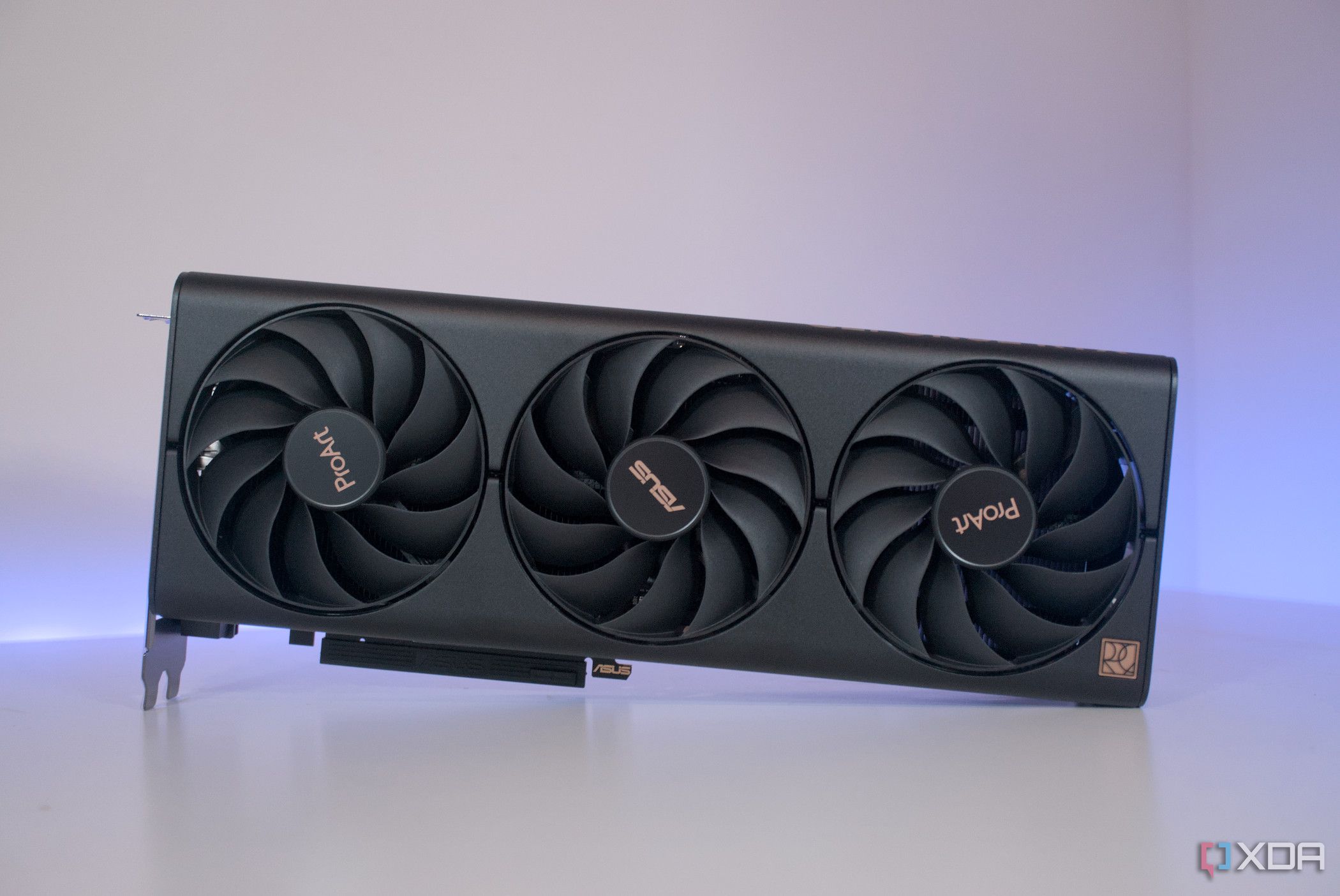
Asus ProArt GeForce RTX 4060 Ti review: Smart looks, cool performance
This GPU isn't for gaming, thoughOn the Intel side, the Arc A770 stands its ground against the RTX 4060 Ti, especially once you consider that the A770 packs a 16GB VRAM despite costing less than an 8GB version of the RTX 4060 Ti. Likewise, AMD's RX 7600 XT has similar specs and more video memory than the 4060 Ti, making it the better option if you want more VRAM for gaming at higher resolutions. That said, like other Nvidia GPUs, DLSS and ray-tracing grant the RTX 4060 Ti the upper hand against Team Red and Team Blue's offerings.
With a price of $400 for the 8GB model, the RTX 4060 Ti costs almost twice as much as the other options on this list. However, there's no denying that you'll get superior performance that matches the price.
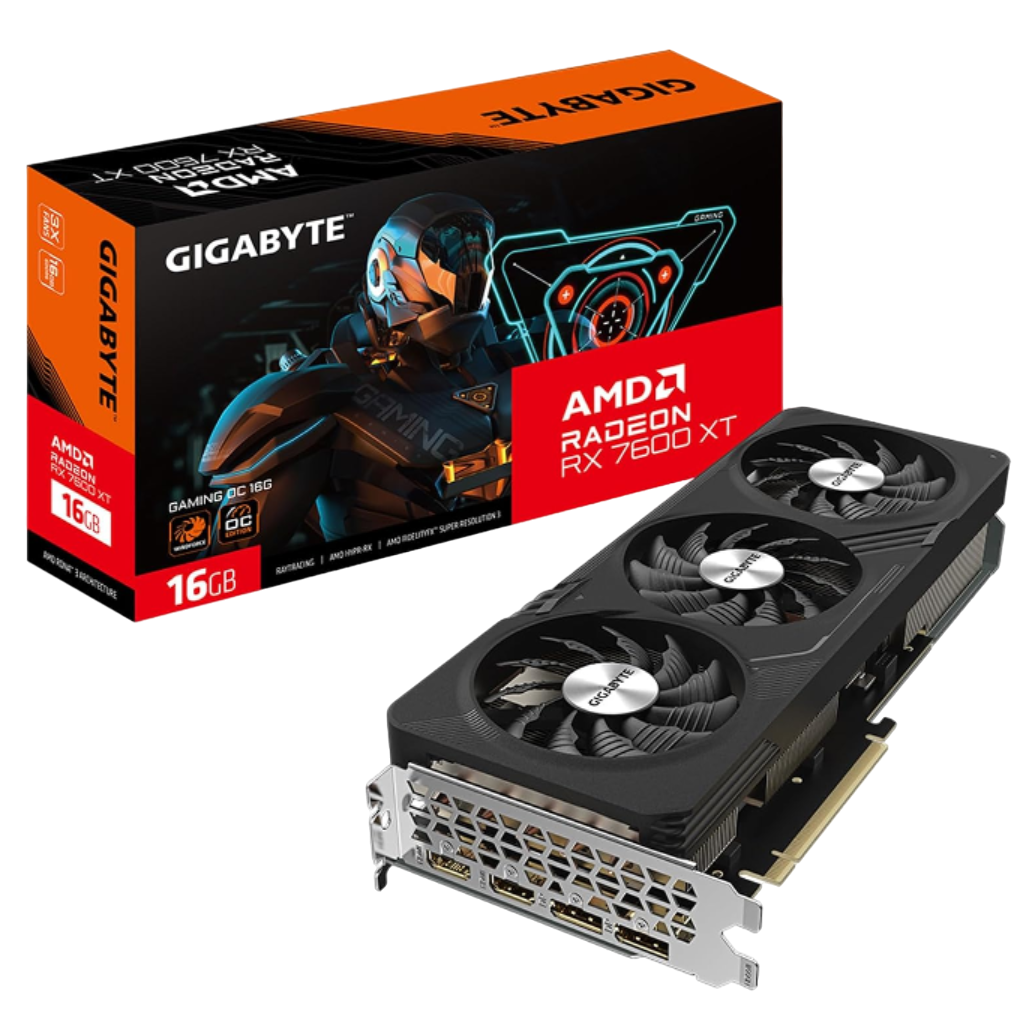
GIGABYTE Radeon RX 7600 XT Gaming OC 16G
The best budget option from Team Red
AMD has always been great at manufacturing budget cards, and the RX 7600 XT Gaming OC is no exception. Priced under $350, the Radeon RX 7600 XT is a budget GPU that provides strong competition for the RTX 4060 Ti.
- Relatively affordable
- Supports DisplayPort 2.1 and HDMI 2.1
- 16GB of VRAM is great for 1440p
- Generally weaker than the RTX 4060 Ti
Since we've included the RTX 4060 Ti, which barely meets the "affordable GPU" qualification with its borderline $400 price tag, it's time to talk about the RX 7600 XT from AMD. Costing at least $50 less than the 4060 Ti, the RX 7600 XT is arguably the better option for AMD supporters who want a higher VRAM over ray-tracing capabilities.
Specs-wise, the RX 7600 XT is armed with the same number of Ray Accelerators, Compute Units, and AI Accelerators as its non-XT variant. However, it has a higher 2,470 MHz base and 2,755 MHz turbo clock speeds, while the RX 7600 is limited to a 2,250MHz base and a 2,655MHz turbo frequency. The RX 7600 XT pulls ahead of its younger sibling when it comes to the VRAM, as the 16GB of GDDR6 memory makes it more suitable for gaming at 1440p.
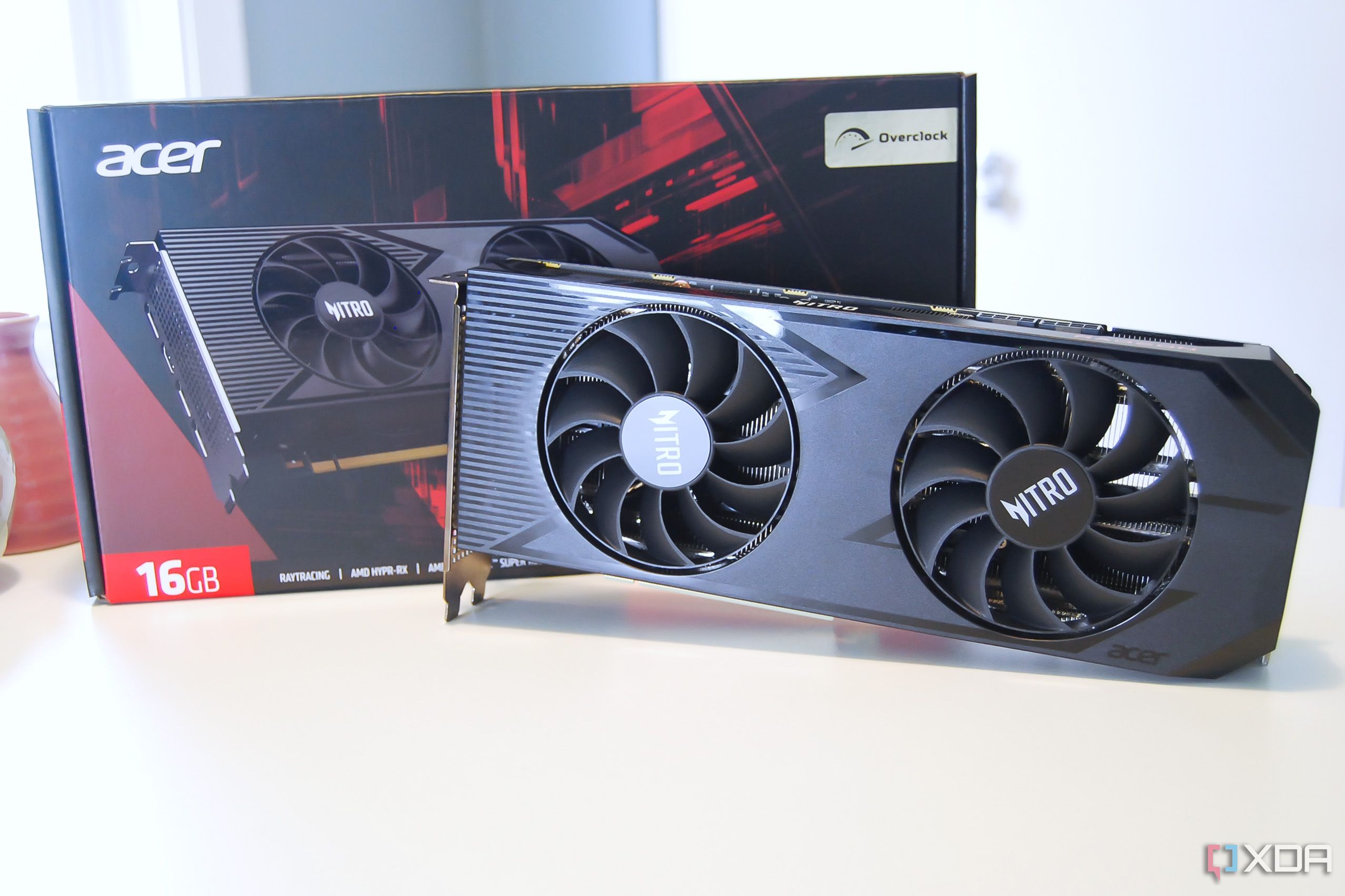
Acer Nitro Radeon RX 7600 XT OC review: A $360 price tag makes it harder to swallow than the competition
It's the right card for 1080p, but is it the right card for your budget?When compared to the RTX 4060, the RX 7600 XT wins by a small margin. However, it loses to the 4060 Ti as far as raw performance is considered. That said, the RX 7600 XT has the FSR card up its sleeve. If you're not someone who desperately needs DLSS, then FSR 3 is a worthwhile alternative to Nvidia's upscaling algorithm. On the Intel side, the Arc A770 serves as the 7600 XT's rival, though I'd recommend the latter if you want a bug-free gaming experience.
Just like the performance, the RX 7600 XT is priced right between the RTX 4060 and 4060 Ti. But once you start comparing the price-to-performance ratio, the RX 7600 XT easily beats both GPUs with its 16GB of VRAM.
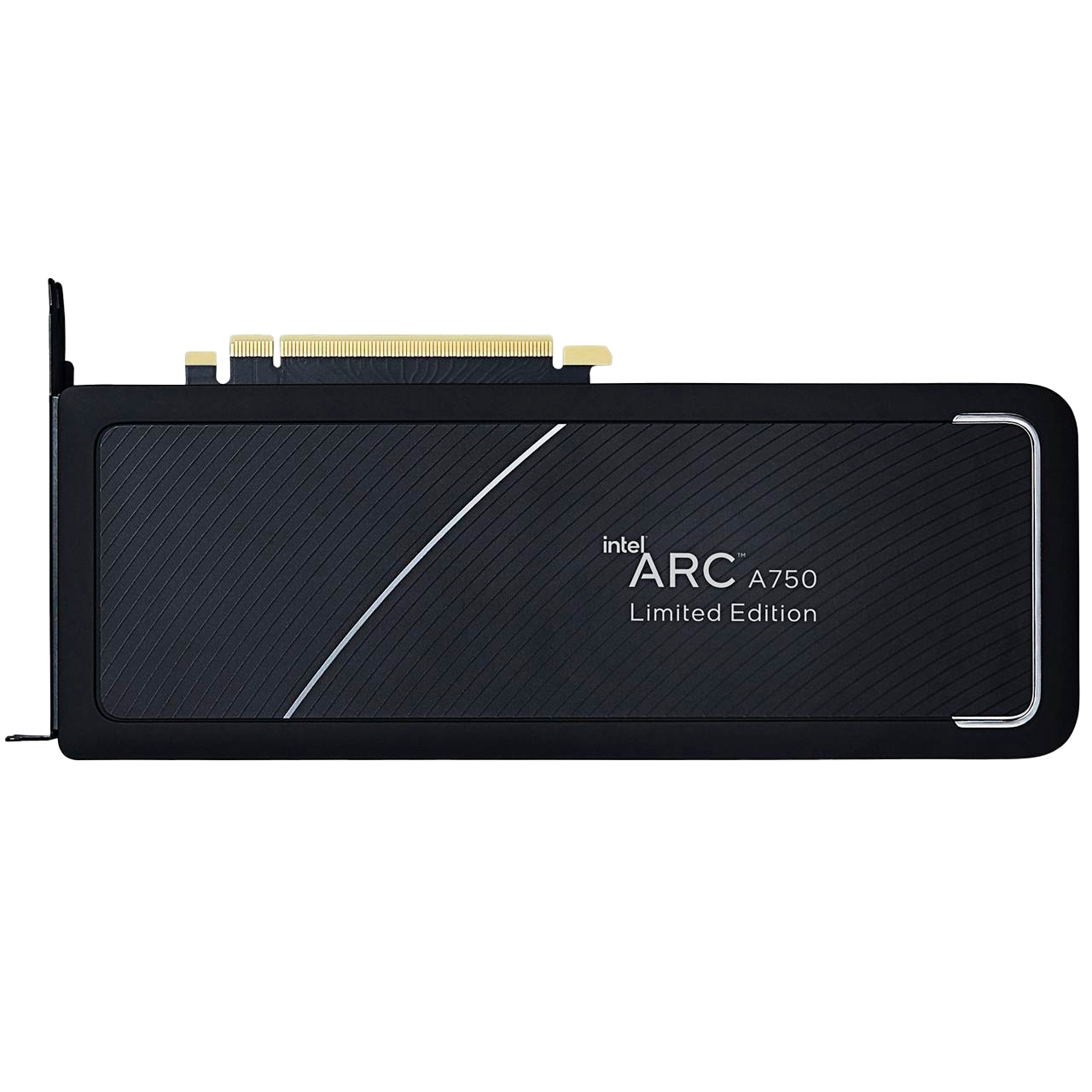
Intel Arc A750 Limited Edition
A bit buggy, but a solid choice for gaming and content creation
Intel's Arc A750 graphics card is a strong contender at the midrange thanks to its $250 price tag and decent performance. It's 90% of the A770 for much less and competes against the more expensive RX 6600 XT and RTX 3060.
- Great value
- XeSS Resolution upscaling and ray tracing
- AV1 encoding
- Buggy drivers, though Intel is improving them
Intel's first attempt at consumer-dedicated graphics in two decades focused purely on the more budget-conscious area of the market. The Arc A750 isn't as cheap as some GPUs, but at around $250 (or even less since it seems to be on permanent sale), it's affordable enough to give any budget system some serious horsepower. It's roughly equal to the RTX 4060 and RX 6650 XT in performance and features, though inconsistent performance from driver issues means it's not always the best GPU at this price point (though it often is).
Performance-wise, it isn't too far off from the flagship Arc A770, having 28 of the A770's 32 Xe cores, though it is limited to 8GB of VRAM as opposed to the A770's potential 16GB. In the wider context, the A750 performs at a similar level to Nvidia's RTX 3060 and AMD's RX 6650 XT with a much more attractive price-to-performance ratio. One other thing to note is that if your motherboard doesn't support resizeable BAR or ReBAR, you should avoid Intel Arc Alchemist GPUs as they require this feature to be enabled to achieve good performance.
Besides performance and ray tracing, the A750 boasts DisplayPort 2.0, something not even the RTX 4090 has, and HDMI 2.1. Additionally, it was one of the first cards to launch with a hardware AV1 encoder, making it perfect for content creators who want to be on the bleeding edge. There are some issues with older games, particularly those relying on DX9 since there is no hardware support. But newer technologies like DX12 and Vulkan see great performance on the A750. And with 8GB of VRAM, it's better specced than some of its alternatives.
While driver issues plagued Intel's Arc GPUs when they first launched, Intel has been hard at work resolving bugs, glitches, and performance issues. I'm much more comfortable giving a thumbs up to the A750 now that it can provide a more reliable and consistent gaming experience. The A750's price cuts have allowed it to continue to be competitive against the RX 6600 and 6650 XT even though both of those cards are much cheaper than they used to be.
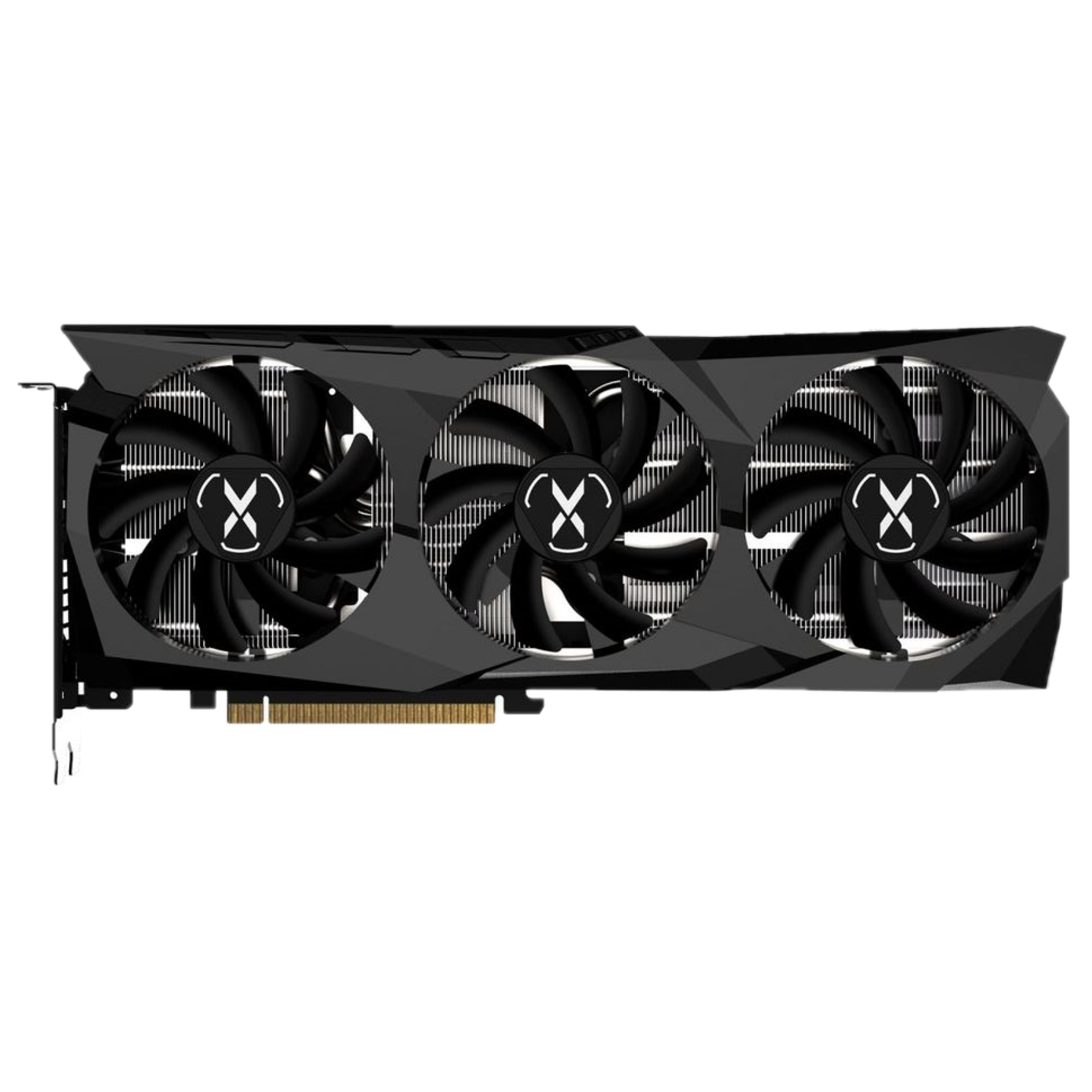
AMD Radeon RX 6700
A weird midrange GPU at a potentially great price
AMD's RX 6700 is a graphics card that straddles the line between budget and midrange. It's effectively a slightly slower RX 6700 XT with 10GB of VRAM, less cores, less cache, and a lower clock speed.
- Great for high framerates at 1080p and 1440p resolutions
- 10GB of VRAM
- Sometimes retails for $300 or slightly less
- Probably going out of stock very soon
The RX 6700 is the black sheep of the RX 6000 series. It came out only in 2022, much later than most other RX 6000 cards, and pretty much wasn't marketed at all. It also sits somewhat awkwardly between the RX 6650 XT and the RX 6700 XT, which cost around $250 and $330, respectively. What makes the 6700 intriguing however is when it's closer to the $300 mark or less, making it at times a better deal than the 6650 XT, and a great choice for anyone wanting to game at a higher framerate at 1080p or even 1440p.
The 6700 slots in right between the 6650 XT and 6700 XT with 36 CUs, 80MB of Infinity Cache, and 10GB of VRAM. One quirk of the 6700's spec sheet is its relatively low clock speed, about 200 to 300 MHz lower than the 6650 XT and 6700 XT. But since all of these cards are based on the same silicon, the 6700 should have some room for overclocking, which means even higher performance. And speaking of performance, the 6700 is about 10% faster than the 6650 XT and about 90% as fast as the 6700, which isn't surprising based on the spec sheet.
The niche for the 6700 comes in when you look at the price. Some models are going for $300 or less, which is about the same price the 6650 XT goes for. The 6700 has more VRAM, is faster out of the box, and can run even faster with an overclock, so it's not only better for hitting a high framerate at 1080p and 1440p, but also just a better deal in general.
That's all assuming you can find a 6700 at that magical $300 price point or less though. The problem is that there aren't a ton of 6700 models around, and many of them are actually going out of stock. At the time of writing, XFX's Speedster SWFT309 is available at major retailers and for just $270 or $280, but it's hard to imagine that lasting for long. If you want the best value for $300, get in while you can.
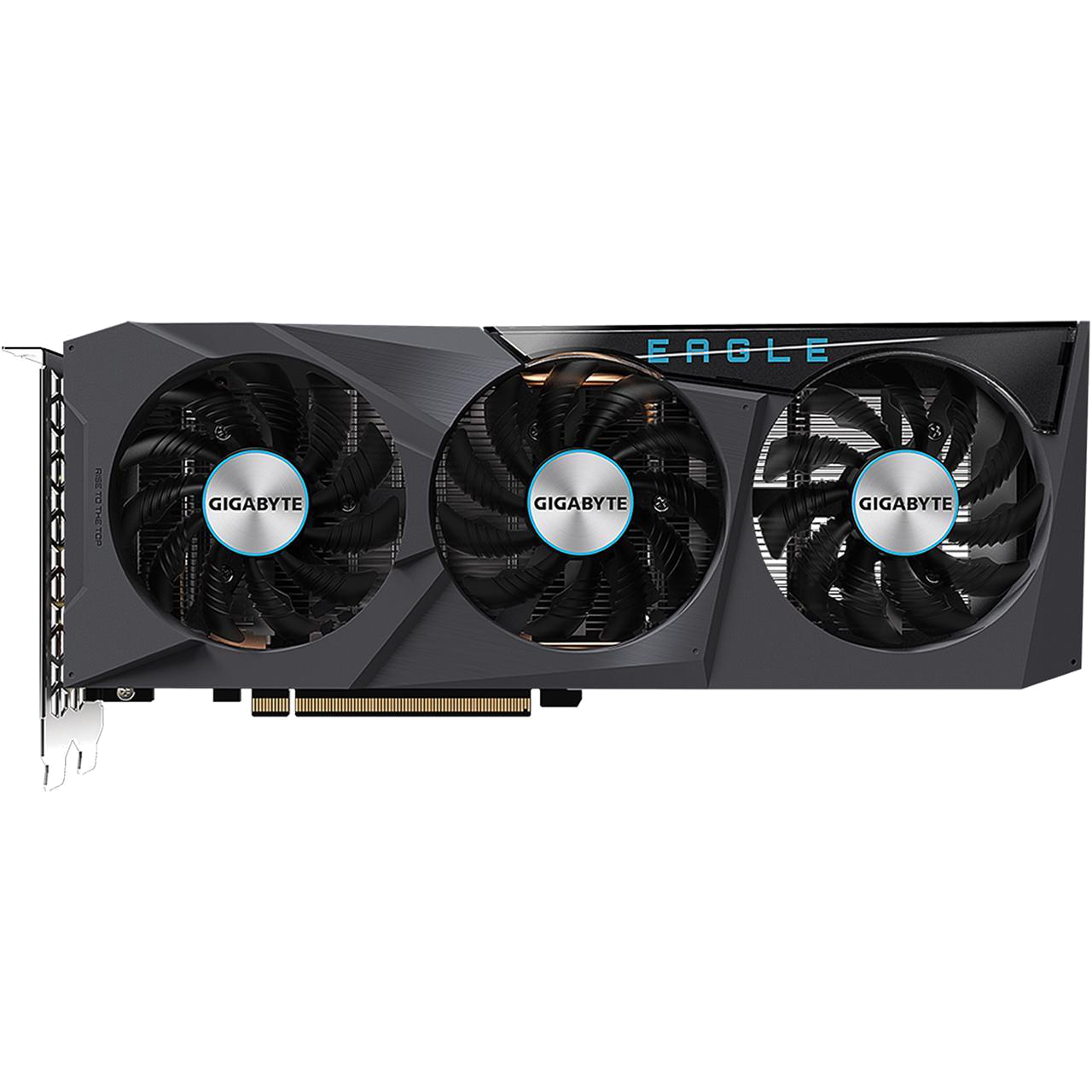
Gigabyte Radeon RX 6600 Eagle 8G Graphics Card
An older GPU that pulls it own weight
Gigabyte's Radeon RX 6600 Eagle is a last-gen GPU perfect for those who want a budget card for gaming at 1080p. For less than $200, you get an energy-efficient graphics card with 8GB of VRAM. Plus, its triple-fan configuration can keep the RX 6600 cool even after slight overclocking.
- Good value for the features
- 8GB of VRAM
- Solid 1080p gaming
- Over two years old
The AMD Radeon RX 6600 is essentially a cut-down RX 6650 XT. Fundamentally, there aren't any huge differences between these two GPUs, but with the release of the RX 7000-series graphics cards, you can buy the RX 6600 for less than $200. As such, it's far more accessible to budget buyers while having a better bang for your buck.
Generally, you'll find the outdated 6600 to be 25-30% slower than the new RX 7600. The difference in performance can be attributed to the RX 6600's slower core clock speed, lower CU count, and slower VRAM. While there's nothing you can do about the lower core count, you could try overclocking a 6600 to get a performance boost. In fact, the Gigabyte Radeon RX 6600 Eagle is one of the better cards for overclocking thanks to its triple-fan setup that makes it easier to cool the GPU at higher core and memory frequencies.
There are a couple of features that do help the 6600 compete with Nvidia's and Intel's cards. FSR is a good alternative to both DLSS and XeSS, and has become quite formidable in recent years. Plus, it's present in almost as many games as DLSS, though the ray-tracing performance is quite abysmal, even when you compare it to the last-gen RTX 3060 cards.
Although you can find the RX 6600 for under $200, it's still a last-gen card, and sooner or later, it's bound to go out of stock. Meanwhile, the average RX 7600 card sells for less than $275 and offers a huge performance boost over the 6600, making it the better option in 2024. But if you can find a 6600 in stock under $200, it's a deal you should take.
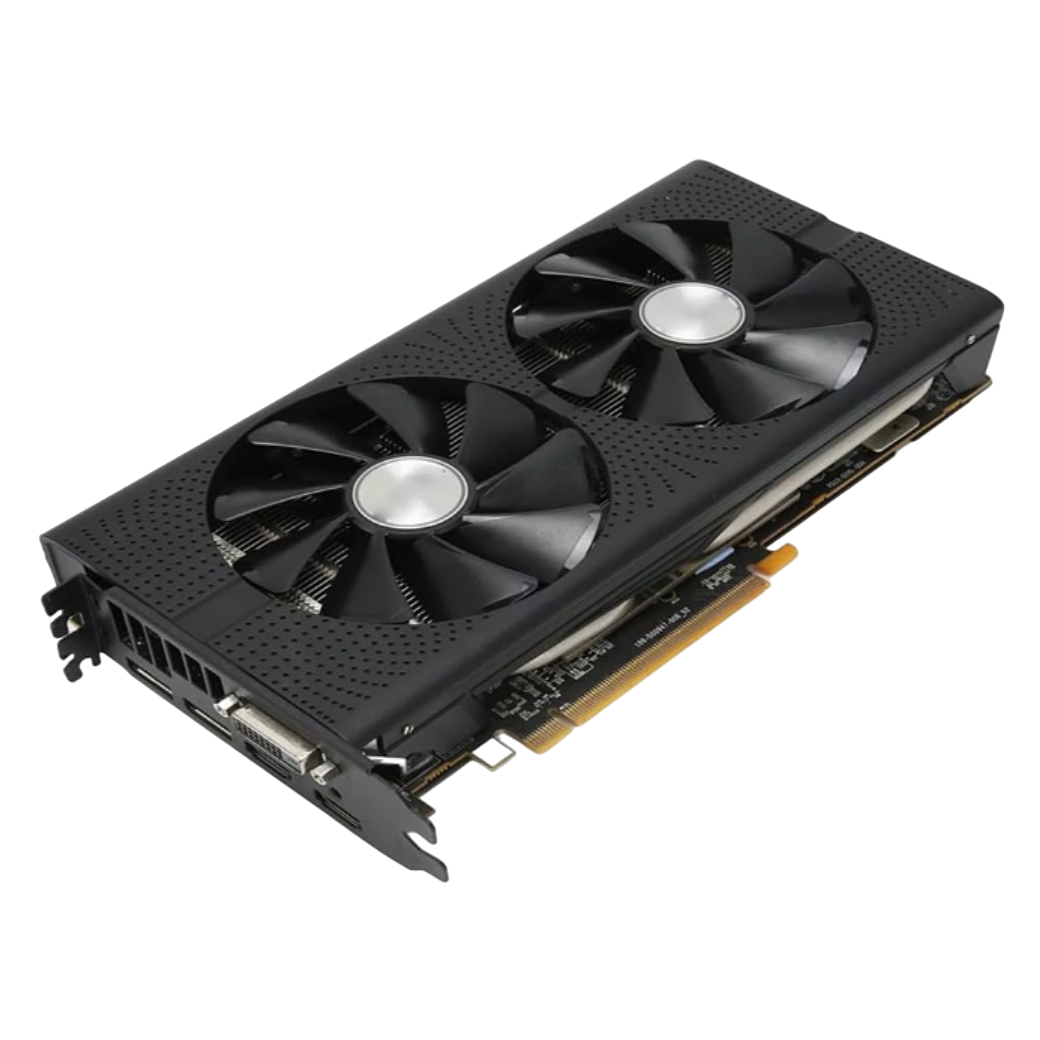
AMD RX 580-8GB
The cheapest 1080p GPU you can find
The Radeon RX 580 might be getting on in years, but with 8GB of VRAM, it's still up to the task with modern games at 1080p resolution.
- 8GB of VRAM
- Can manage 1080p gaming
- Limited driver support life
- Aging in 2024
The AMD Radeon RX 580 is the oldest graphics card on this list. However, it's a good replacement for a dead GPU in an older tower PC, as it's quite capable for media consumption. While you can't really compare it to the RTX 4060 Ti, RX 7600, Intel Arc A750, or even the last-gen RTX 3050, the RX 580 is surprisingly still viable for 1080p, low-spec gaming.
With 8GB of VRAM, this card can handle eSports titles with ease, whether that's MOBAs, FPS, or games like Rocket League. It can also handle some more demanding games at 1080p, as the higher amount of VRAM means higher-quality textures can be used. It has full DirectX 12 support, boosts up to a 1,320 MHz core clock, and has a 6-pin PCIe supplementary power cable, so most power supply units will have no issues powering this card. And while the lower specs will make this easier to cool, the RX 500 series was designed to run warm, so temperatures over 75 degrees Celsius aren't uncommon to see.
Best budget graphics cards to buy in 2024: Final thoughts
With almost every GPU costing close to $300, the current GPU generation doesn't have a lot of affordable options to choose from. Although things aren't great at the moment if you're on a budget, there are several sales throughout the year, where you can nab a high-tier GPU for a lower price. Additionally, price cuts are pretty common for older cards, and you can consider looking into an outdated GPU if you're unable to afford the newer ones. But for those looking for an all-rounder budget card, the RTX 4060 is our top recommendation. While it lacks the higher VRAM of similarly priced AMD counterparts, it's compatible with DLSS 3.5 and can provide respectable frame rates even at high settings at 1080p.

Asus Dual GeForce RTX 4060
Asus's RTX 4060 Dual is one of the more affordable versions of the 4060. It comes with a simple but cost-efficient dual fan design, which is more compact than bigger, triple fan models.
Meanwhile, Intel's Arc A750 is a good choice if you want something with a little better bang for the buck and slightly better features like AV1 encoding. If you're willing to shell out a little more than $300 on a GPU, then the RX 7600 XT makes for a worthwhile alternative to Team Blue and Team Green's budget cards.
If you wish to upgrade to an affordable processor, be sure to check out our list of the best cheap CPUs. You can also read our $1,000 mainstream PC build guide if you're curious about what kind of parts would work best with a budget GPU.
